#patrick müller
Explore tagged Tumblr posts
Text


Patrick Müller, {2016} Mond-Ding
#film#gif#patrick müller#mond-ding#moon thing#2016#short film#analog film#super 8#2010s#male filmmakers#wind#trees#colour#germany
0 notes
Text
Skee Mask — C (self-released)

For anyone else, C would herald the arrival of a great talent in electronic music. Paced to perfection, indebted to electronic music history without necessarily being in service to any one variant of it (well, beyond dub techno), emotionally ambiguous and rich with sonic detail, C satisfies from start to finish — so it might come as some surprise to listeners that this is, in fact, merely Munich producer Bryan Müller’s third compilation of unmastered bits n’ bobs inside two years. To have broken through the way he did with 2018’s Compro only to retreat to these self-released full lengths in the wake of 2021’s equally potent double album Pool is a power move of the highest order.
Müller’s retreat has a few dimensions to it. In addition to the well-publicized withdrawal of his catalog from Spotify in early 2022, he’s also backed away from the more overt careerist framing of full-length after full-length via his usual home over with the Zenker brothers at Ilian Tape. Instead, he’s chosen to jettison a glut of perfectly good material via Ilian Tape’s nameless ISS series, of which 007 comes closest to being a fourth LP (though it could just as easily be a single unbroken song). In short, he’s releasing music at an unprecedented rate and it’s all somehow interchangeable, equally capable of being on an “official” album, a stray 12�� or some supposed compilation of odds n’ sods.
Lest you think the quality is any less for its release format, opener “MDP2” signals the familiar terrain you’re about to traverse and should immediately put to rest any apprehensions over quality. Cascading pads wash slowly, gently over you, like a double-speed William Baskinski; as a scene-setting piece, it’s among my favorites of his. The first percussion doesn’t appear until the soft breaks of “Bassline Dub” nearly seven minutes into the album, and “Keygruv” is the first really dance-friendly track, but even then, Müller switches up the beat barely half a minute in, which feels off-kilter until you realize he’s just thrown a dummy, the brain recalibrates, and the groove reveals itself.
The spritely, broken Windows 98 loop of “One for Vertigo” is probably the most sonically distinctive song present, though “11616” sounds straight out of the pause screen of a PlayStation first-person shooter and gives it a good run for its money. “Minitx” is the “hardest” dance number, featuring a controlled screech and a muted countermelody going on deep beneath the surface that’d play well at your local darkwave night. The barely there ambient swoon of “Blok” acts as an excellent breather late in the tracklist, introducing the concluding triptych that also features the fourth-world excursion “Pitchacid” and a twinkling, gorgeously subtle “thnk you” on the outro.
In a time where discussions of so much electronic music too often veer wildly between the poles of dancefloor hedonism in the face of authoritarianism and ambient’s significance thanks to pandemic lockdowns and whatever TikTok contortions its Gen Z content creators amuse themselves over, C is a quiet, gentle reminder that there is always the option to step back, to remove yourself from the vortex, to breathe and let yourself live at your own clip, on your own terms, to your own satisfaction. Forget dictators and algorithms; power comes from within.
Patrick Masterson
#skee mask#c#patrick masterson#albumreview#dusted magazine#electronic music#Bryan Müller#Ilian Tape#ISS series#electronic#dub#techno#house#ambient#breaks
4 notes
·
View notes
Text
Holger Fock und Sabine Müller erhalten Paul-Celan-Preis
Der vom Deutschen Literaturfonds alljährlich vergebene, mit 20.000 Euro dotierte Paul-Celan-Preis für herausragende Übersetzungen geht in diesem Jahr an das Übersetzungstandem Holger Fock und Sabine Müller. Damit erhalten zwei verdiente Übersetzer:innen aus dem Französischen den wichtigsten deutschen Übersetzerpreis. Dass auch sie auf das Preisgeld angewiesen sind, haben sie erst kürzlich in…

View On WordPress
#Alain Mabanckou#Antoine Volodine#Christiane Körner#Érik Orsenna#Hinrich Schmidt-Henkel#Holger Fock#Jean Rolin#Joshua Cohen#Karin Betz#Marieke Hamburger#Mathias Énard#Mohamed Mbougar Sarr#Patricia Klobusiczky#Patrick Deville#Paul-Celan-Preis#Prix Goncourt#Sabine Müller#Sylvain Tesson#Ulrich Blumenbach#Ulrich Sonnenberg#Ursula Gräfe
0 notes
Text
‘Pimpernel of the Hellenes’, ‘Major Paddy’, ‘Enchanted maniac’: Will the real Paddy Leigh Fermor please stand up?
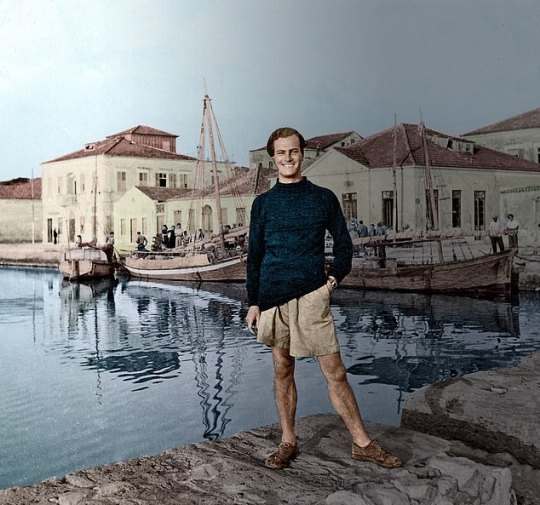
Paradox reconciles all contradictions. - Patrick Leigh Fermor
So one evening I was baby sitting my nephews and nieces here in our family chalet in Verbier, high up in the Swiss Alps. It was my turn to baby sit as the rest of my family enjoyed the fantastic classical music concerts and events showcased at the two week long Verbier 30th Festival. The little scamps had gone to bed and my father and I watched an old British war movie on DVD, ‘Ill Met By Moonlight’ (1957). It was filmed by the legendary team of Michael Powell and Emeric Pressburger based on the 1950 book ‘Ill Met by Moonlight: The Abduction of General Kreipe’ by W. Stanley Moss.
I’ve seen the film a couple of times before, but until now never really paid attention to where the title came from. My father said it was from Shakespeare’s ‘A Midsummer’s Night’s Dream’ And so it was. In the play, Oberon, the king of the fairies and the Queen are having a fairly bitter drawn-out fight over custody of a changeling Indian child, and this is how the pissed off king greets the queen when they run into each other, “Ill met by moonlight, proud Titania”. Oberon is basically saying "Oh Lord, it's you..." and Titania's response is basically a flippant middle finger. One of the best modern reasons to read Shakespeare: to throw playful erudite shade at others.
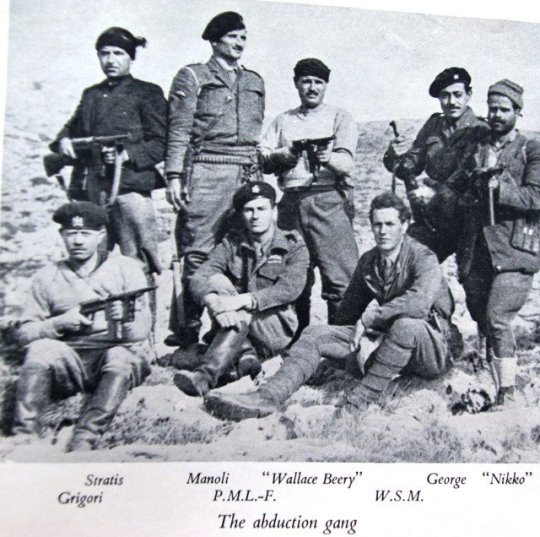
Anyway, the historical background of the film is the German invasion of Crete in May 1941. After an intense ten-day battle, Allied troops were driven back across the island, and many were evacuated from beaches along the southern coast. Some Cretans and British officers took to the mountains to organise resistance against the occupying forces. The German occupation that followed was especially brutal. Dreadful reprisals followed every act of resistance. The German commander, General Müller, insisted on taking 50 Cretan lives for every German soldier killed; he became known as ‘The Butcher of Crete���.
As a Classicist side note, there had been a close association between Britain and Crete since the early 20th century, when archaeologist Sir Arthur Evans had uncovered the sensational remains of a Minoan palace at Knossos. The headquarters of the British archaeological school in Crete was a large villa alongside the site, known as Villa Ariadne. Several archaeologists, who knew the island and its people well, went underground after the German occupation to aid the Cretan resistance. Continuing in this tradition, scholar and travel-writer Patrick Leigh Fermor, who had got to know Greece in the 1930s, joined the Special Operations Executive (SOE).
During the German occupation, Major Paddy Leigh Fermor travelled to Crete three times to help organise local resistance against the hated German occupation. On the third occasion, in February 1944, he was parachuted in with a specific mission to kidnap German commander General Müller, to boost morale on Crete along with his erstwhile SOE comrade Capt. W. Stanley Moss MC (aka Billy Moss) of the Coldstream Guards. However, just after they parachute in, General Müller was replaced by General Heinrich Kreipe, who transferred from the Russian Front. Thinking that capturing one general was as good as another, Fermor merrily go ahead with the daring kidnap operation.
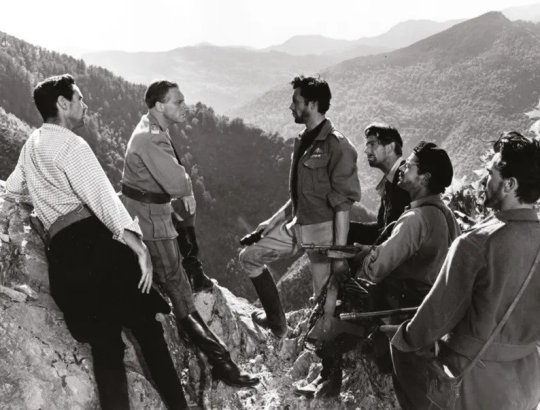
It’s at this point that the narrative of Michael Powell and Emeric Pressburger’s ‘Ill Met by Moonlight’ (1957) picks up. Dirk Bogarde plays Paddy Leigh Fermor, David Oxley plays Moss, and Marius Goring plays the taciturn German paratroop general. Blink and you’ll miss the late great Christopher Lee making a cameo appearance as a German officer in the dentist’s room scene.
The film naturally takes some liberty with the facts but it’s a cracking yarn of high adventure and drama. Xan Fielding, a close friend of Leigh Fermor from the SOE in Cairo, was taken on as technical adviser. The fact the film was shot in in the Alpes-Maritimes in France and Italy, and on the Côte d'Azur in France, far away from the craggy valleys and mountains of Crete itself. The director Michael Powell spent some time walking in Crete to get to know the island, but decided that, with the confused and volatile state of Greek politics, it was not suitable to film there.
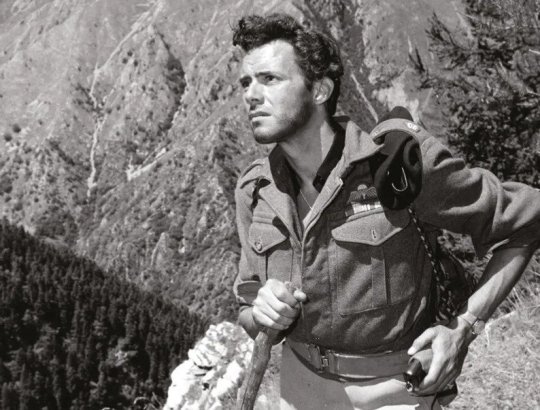
Looking back years after he had directed it Powell didn’t think much of his own film. By contrast, Paddy Leigh Fermor, who was on set throughout the film shoot, was very happy with Bogarde’s portrayal of him with Byronic glamour. Watching the movie again ‘Ill Met by Moonlight’ remains a classic and stands out from many British war films of the 1950s because of its realism. The British SOE men and the Cretan guerrillas look absolutely right for their parts. It is dramatic and full of suspense while filled with much boyish humour.
I was disappointed with one notable omission in the film that did happen in real life. According to Patrick Leigh Fermor, at dawn one day during the journey across the mountains, General Kreipe was looking at the mist rising from Mount Ida and began to recite, in Latin, the opening lines of Horace’s ninth ode:
Vides ut alta stet nive candidum Soracte nec iam sustineant onus silvae laborantes geluque flumina constiterint acuto?
Behold yon Mountains hoary height, Made higher with new Mounts of Snow; Again behold the Winters weight Oppress the lab’ring Woods below: And Streams, with Icy fetters bound, Benum’d and crampt to solid Ground
(John Dryden 1685)
Leigh Fermor picked up on the General, and recited the remaining stanzas of the Ode. ‘Ach so, Herr Major,’ said Kreipe when Leigh Fermor had finished. Both men were amazed to realise they shared a classical education and a love of ancient Latin poetry.
Leigh Fermor later wrote that it was as though the war had ceased to exist for a moment, as ‘We had both drunk from the same fountains before.’ It brought captor and captive together with a strange bond. The scene was not reproduced in the film, as Powell and Pressburger probably thought it would make the men sound too academic for a popular cinema audience.
Leigh Fermor and Kreipe met again in the early 1970s, on a Greek television show, and got on famously together. The General said Leigh Fermor had treated him chivalrously as a captive. They remained friends until Kreipe’s death.

After sharing a late night drink with my father after the film, I began to muse on the figure of Paddy Leigh Fermor, a family friend and someone I met along with his wife, Joan, as a little girl. My grandparents, and especially my grandmother, knew Paddy briefly from their days during and after the Second World War.
My father shared a few stories about him when he and my mother visited his beautiful home in Greece, where even at his advanced age he remained the most generous of hosts and the most outrageous flirt.
One of my memories was getting into his battered old Peugeot in the drive way and trying to drive it when my feet could barely touch the pedals. It wouldn’t have mattered in any case as the brakes didn’t work as he cheerfully said later as we careened around a dirt road to go around the mountains for a drive.
Many years later in April 2022, I tried to visit the home of the late Patrick and Joan Leigh Fermor - a sort of pristine shrine to their memory that one can also stay in any of the rooms as a vacation rental - in the coastal fishing village of Kadarmyli in the Peloponnese, as part of a hiking and mountaineering sojourn around Greece with ex-Army friends. We couldn’t stay there as it was already rented out to other guests, and so we stayed higher up the mountain in a villa, but we swam in front of the Fermor’s home which was on the water’s edge.
You could never put your finger on Paddy Leigh Fermor. He hid behind his gift for telling yarns, and pulling Ancient Greek verses out of the thin air, as well as boisterously singing local Greek songs with a drink in his hand.
Even after his death in 2011, the question keeps nagging as to who was Paddy Leigh Fermor?
The Dirk Bogarde film too seems to ask, who exactly is the ‘real’ Patrick Leigh Fermor - or the real anyone? Taking its title from a Shakespearian play concerned with dreams and disguises, magic and power, ‘Ill Met By Moonlight’ is all about questions of identity.
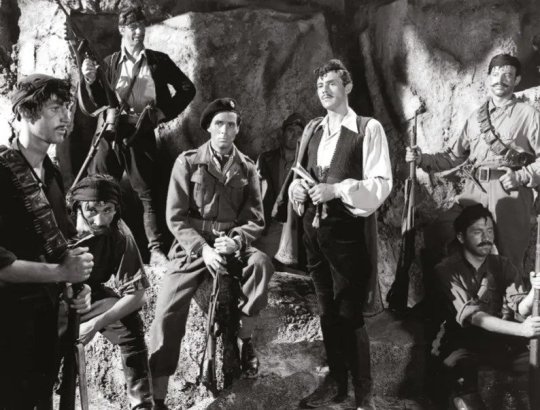
Under the film credits, we see Dirk Bogarde in uniform; then, unexpectedly, we see him in the flamboyant outfit of a Cretan hill-bandit. A title informs us that Major Leigh Fermor was also known by the Greek code-name “Philidem.” In other words, there are two of him (at least), and on one level the adventure the film is about to unfold reflects a conflict in his personality. It’s a conflict shared, unknowingly, by his Nazi opposite number, the fierce, arrogant General Kreipe (an unlikely “proud Titania,” but it’s true that he “with a monster is in love” – the monster of Nazism). Kreipe’s human side is so rigorously repressed by the demands of war and “glory” that he is genuinely unaware of it; ironically, this humanness, which constitutes the true manhood of this Teuton warrior, is revealed by a boy (equivalent to Shakespeare’s Indian Prince?) - who, in turn, is the most grown up person in the movie.
If “Philidem” appears under the credits, caped and open-shirted, a romantic dream-figure out of an operetta or a storybook, he is first seen in the film proper as a coarser, more down-to-earth version of the same thing – an ordinary Cretan peasant in a shabby suit, waiting for a bus. When he makes contact with the Resistance, his personality fragments further.
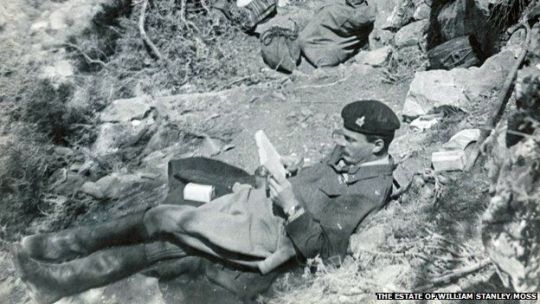
To some, he is the mystical Philidem, Pimpernel of the Hellenes and righter of wrongs. To others he is “Major Paddy,” the happy-go-lucky Englishman of popular movie myth conducting war as if it were a branch of amateur theatricals, a gentleman adventurer relying on breeding to get him through and making fun of the whole business. To Bill Moss (David Oxley), the newly arrived junior officer sent to assist him, he is the cool, fast-thinking professional soldier. And to himself? In his quietly passionate defence of Cretan life and culture, he seems someone else again: a scholar and aesthete outraged by the barbarism and folly of war, and by the moronic arrogance shown by his captive toward the Cretan people.
Whatever his persona, Leigh Fermor is a chameleon who never seems to change very radically in himself. Perhaps because he has this quality of seeming all things to all men – and being those things - he remains unfazed by the monolithic might of the German military machine. Fluent in Greek, he can also speak German like a German and is easily able to assume another disguise, that of a faceless Nazi officer. Although he and Moss make fun of themselves - “If only I had a monocle!” muses Moss when Leigh Fermor tells him he “looks like an Englishman dressed like a German, leaning against the Ritz bar” - they are able to effect the kidnapping with an ease that seems appropriately Puckish. General Kreipe is ignominiously thrust onto the floor of his own limousine, gagged, and sat upon by a couple of the peasants he so despises. Kreipe’s rage is compounded by his firm conviction that he has been snatched by “amateurs” - a belief Leigh Fermor and Moss slyly make no objection to, knowing how it will gnaw at his already shaky Master Race self-confidence.
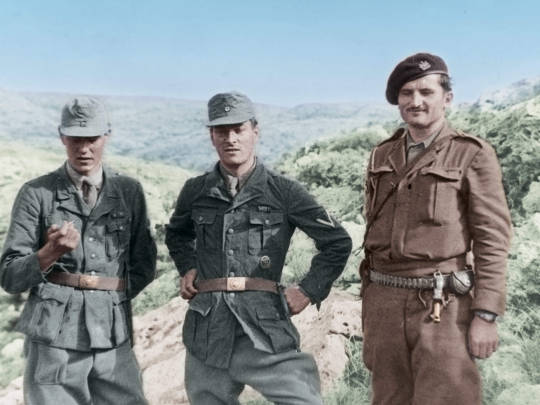
Patrick Leigh Fermor, aka Major Paddy, aka Philidem, in the film’s closing moments, is far from being self-assured intellectual or dashing amateur adventurer or legendary outlaw of the hills. He’s just a tired man who wants to go home and rest up. “How do you feel?” asks Moss. “Flat” is the reply. “You look flat!” says Moss. “I know how I’d like to look …” murmurs Leigh-Fermor wistfully. Moss knows what he’s going to say, and joins in the litany: “Like an Englishman dressed like an Englishman – and leaning against the Ritz bar!” It’s easy to imagine them ordering drinks at that renowned watering-hole with all the suavity required by this little fantasy.
Still, the film’s last images of Crete receding in the distance, until all we can see is the sea, suggests that maybe Major Paddy’s heart is really back in those hills in the “fair and fertile” land that has become as much a Powellian landscape of the mind for us as the studio-built Himalayan convent of ‘Black Narcissus’ or the monochrome Heaven of ‘A Matter of Life and Death’. And, as the film POV closing shots departs both Crete and this film, I began to think that being “dressed like an Englishman and leaning against the Ritz bar” would, for Patrick Leigh Fermor constitute yet another disguise. After all, he said he was of Irish aristocratic stock.
Traveller and writer Paddy Leigh Fermor is best known for two events. He’s known for leading the commando group in occupied Crete to kidnap General Kreipe. But he is also known for the boy who, at a mere 18 years old, set off with little money and a lot of nerve in 1933 to walk from the Hook of Holland to Constantinople.
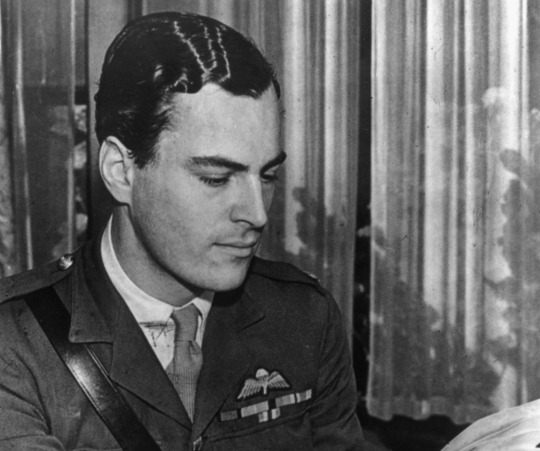
Patrick Leigh Fermor was, in the words of one of his obituaries, a cross between Indiana Jones, James Bond and Graham Greene. Self-reliance and derring-do were lessons learnt from the cradle. When Fermor’s geologist father was posted to India, he and his wife left the infant with family in Northamptonshire and did not return until his fourth birthday. In retrospect, he took great delight in being sent to a school for difficult children and getting himself expelled from the King’s School, Canterbury, when he was caught holding hands with a greengrocer’s daughter eight years his senior. His school report infamously judged him ‘a dangerous mix of sophistication and recklessness’.
Sharing a flat in Shepherd’s Market, one of Mayfair’s seedier corners, Leigh Fermor schooled himself in literature, history, Latin and Greek.
He honed his character with the company of extraordinary people and the words of great writers - he had a prodigious memory for prose as well as poetry. He befriended literary lions such as Sacheverell Sitwell, Evelyn Waugh and Nancy Mitford. His travels began aged ‘eighteen-and-three-quarters’ when he rejected Sandhurst Royal Military College in order to walk the length of Europe from Hook of Holland to Constantinople. He took with him Horace’s Odes and the Oxford Book of Verse though Leigh Fermor could recite Shakespeare soliloquies, Marlowe speeches, Keats’s Odes and as he modestly put it ‘the usual pieces of Tennyson, Browning and Coleridge’ from memory.
Leigh Fermor was then a self-made man in the most literal sense.

Setting off from England in 1933, Fermor resolved to traverse Europe living like a hermit; sleeping in bars and begging for food. But his manly charms and boyish good looks found him being passed like a favourite godson from Schloss to palace by European nobility and he developed a lifelong penchant for aristocratic company. I his own words, ‘In Hungary, I borrowed a horse, then plunged into Transylvania; from Romania on into Bulgaria’. Having reached Constantinople in January 1935, Fermor continued to explore Greece where he fought on the royalist side in Macedonia quelling a republican revolution. In Athens Leigh Fermor met Balasha Cantacuzene, a Romanian countess with whom he fell in love. They were living together in a Moldovan castle when World War Two was declared.
Fluent in Greek, Leigh Fermor was posted as a liaison officer in Albania. Recruited as a Special Operations Executive (SOE), he was shipped from Cairo to German-occupied Crete where he lived disguised as a shepherd in the mountains for two years. On his third expedition to Crete in 1944, Leigh Fermor was parachuted alone onto the island and made connections in the Cretan resistance movement. While waiting for his compatriot Captain Bill Stanley Moss to land by water from Cairo, Leigh Fermor hatched a plot to kidnap German Commander General Heinrich Krieple. He liaised comfortably with Cretan partisans and bandits to pull off one of the war’s greatest coups de théâtre.
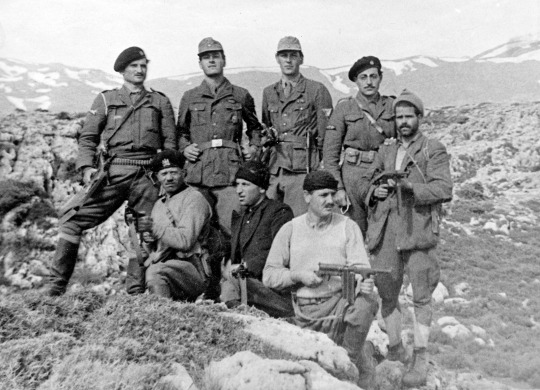
Disguised as German soldiers, Leigh Fermor and Moss stopped Krieple’s car at an improvised check point en route back to Nazi HQ in Knossos. Abandoning the General’s car after a two-hour drive, Leigh Fermor left a note indicating that the kidnappers were British so that there wouldn’t be reprisals against Cretan nationals. When the abduction of the unpopular commander was discovered, a German officer in Heraklion allegedly said ‘well, gentlemen, I think this calls for champagne’. It turns out that General Kreipe was despised by his own soldiers because, amongst other things, he objected to the stopping of his own vehicle for checking in compliance with his commands concerning approved travel orders. It’s why for instance the German troops, both in the film and in real life, dare not stop the General’s car as it drove through the check points at Heraklion.
Krieple was evacuated and taken to Cairo and Leigh Fermor entered the annals of World War Two’s most devil-may-care heroes. With characteristic panache, when he was demobbed Leigh Fermor moved into an attic room at the Ritz paying half a guinea a night. But his first travel book, ‘The Traveller’s Tree’, was not about the European odyssey or the Cretan escapades and centred on Leigh Fermor’s adventures in the Carribbean. Published in 1950, ‘The Traveller’s Tree’ was an inspiration for Ian Fleming’s second James Bond novel ‘Live and Let Die’ (1954).
As a host and house guest, Paddy Leigh Fermor was much sought-after. At one of his parties in Cairo, he counted nine crowned heads. He was a confirmed two-gin-and-tonics before lunch man and smoked eighty to 100 cigarettes a day. His party pieces included singing ‘It’s a Long Way to Tipperary’ in Hindustani and reciting ‘The Walrus and the Carpenter’ backwards. In Cyprus while staying with Laurence Durrell, Leigh Fermor apparently stunned crowds in Bella Pais into silence by singing folk songs in perfect Cretan dialect. As Durrell wrote in ‘Bitter Lemons’ (1957), ‘it is as if they want to embrace Paddy wherever he goes’.
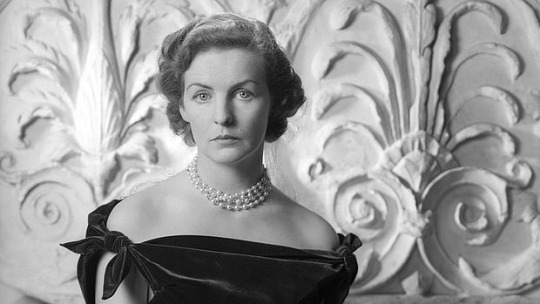
He struck up a partiuclar friendship with the famous Mitford sisters, especially Deborah Mitford, later ‘Debo’, the Duchess of Devonshire. It was at the Devonshires’ Irish estate Lismore Castle that ‘Darling Debo’ and ‘Darling Pad’ met and began to correspond. A characteristic letter from the Duchess in 1962 reads ‘The dear old President (JFK) phoned the other day. First question was ‘Who’ve you got with you, Paddy?” He’s got you on the brain’ to which Fermor replies of a broken wrist ‘Balinese dancing’s out, for a start; so, should I ever succeed to a throne, is holding an orb. The other drawbacks will surface with time’.
After the war he travelled widely but was always drawn back to Greece. He built a house on the Mani peninsula - which had been, significantly, the only part of Magna Graecia to resist Ottoman colonisation since the fall of Constantinople in 1453. Before his death in 2011 at the age of 96, he wrote some of the most acclaimed travel books of the 20th century.
His books contain some of the finest prose writing of the past century and disprove Wilde's maxim that "it is better to have a permanent income than to be fascinating".
Charm, self-taught knowledge and enthusiasm made up for the lack of a university degree or a private income. His teenage walk across Europe and subsequent romantic sojourn in Baleni, Romania, with Princess Balasha Cantacuzene are proof enough of that. But the difficulty of capturing such an unconventional and glamorous life is made harder by the certainty that Fermor was an unreliable narrator.
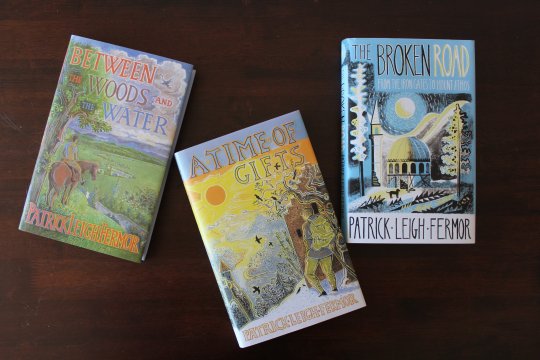
He was also an infuriatingly slow writer. Driven by a life-long passion for words yet hampered by anxiety about his abilities, Leigh Fermor published eight books over 41 years.
‘The Traveller's Tree’ describes his postwar journey through the Caribbean; ‘Mani‘ and ‘Roumeli’ (1958 and 1966) draw on his experiences in Greece, where he would live for much of the latter part of his life. But it is the books that came out of his trans-Europe walk that reveal both the brilliance and the flaws. ‘A Time of Gifts’ was published in 1977, 44 years after he set out on the journey. ‘Between the Woods and the Water’ appeared nine years later. Both describe a world of privilege and poverty, communism and the rising tide of Nazism, and end with the unequivocal words, "To be continued". Yet the third volume hung like an albatross around the author's neck. As the years passed, Fermor found it impossible to shape the last part of his story in the way he wanted.
Leigh Fermor was that rarest of men: a man determined to live on his own terms, if not his own means, and who mostly - and mostly magnificently - succeeded. Always popping off on a journey when he should have been writing about the last one, always ready to party, he was forever chasing beautiful, fascinating or powerful women, even when with his wife, Joan Raynor. She was the great facilitator who funded his passion for travel and writing, as well as women, from her trust fund. His love affairs were discreet but legendary.
Leigh Fermor was happiest among the rogues. Over a lifetime on the road, he sought them, and in turn they responded to his charm, nose for adventure, and his famous wit. He was a keenly-anticipated dinner guest - once outshining Richard Burton at a London society soirée, who he cut-off midway through a recital of ‘Hamlet’. As Richard Burton stormed out, the pleading society hostess said, “But Paddy’s a war hero!” to which Burton grouchily replied, “I don’t give a damn who he is!”
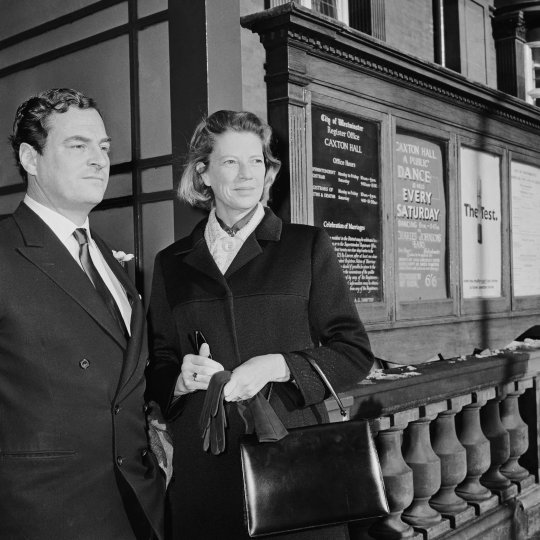
His partnership with and then marriage to Joan Raynor was an open relationship, at least on Leigh Fermor’s side. Paddy saw in Joan his kindred spirit. Like him, she spent much of her youth travelling to where she pleased; largely in France, where the photographer and literary critic Cyril Connolly became besotted by her. Joan was the daughter of Sir Bolton and Lady Eyres Monsell of Dumbleton Hall, Worcestershire. She was not only stunningly pretty but also 'a beautiful ideal, with the perfect bathing dress, the most lovely face, the most elaborate evening dress', as the Eton educated Connolly described her. Joan also stood out from the upper-class beauties of her day in that she supplemented her mean rich father's allowance by earning her living as a decent photographer.
In 1946, she met Leigh Fermor in Athens, while he was deputy director of the British Institute. Joan met him at a time when he was then in a relationship with a French woman called Denise, who was pregnant with his child, which she aborted. The pair would travel to the Caribbean together under the invitation of Greek photographer Costas, falling madly in love.

She was the only woman that - after decades of sexual scandals - matched his own erratic behaviour. Stories of how they dined fully-clothed in the Mediterranean, dragging a table into the sea, as well as their myriad cats and olive groves, paint a restless couple, who, when not out articulating the peoples of their adopted homeland, kept themselves very busy.
The attraction between Paddy and Joan was instant. So many love affairs that Paddy indulged in seemed about as brief as the flame from a burning envelope and you expected this one with Joan to be too. But somehow, miraculously, it lasts.
The two were apart a great deal, but in their case, absence did make the heart grow fonder. While Paddy was staying in a monastery in Normandy, supposed to be thinking monk-like thoughts that he would eventually put into his masterpiece A Time To Keep Silence, he was also writing sexy letters to Joan: 'At this distance you seem about as nearly perfect a human being as can be, my darling little wretch, so it's about time I was brought to my senses.' And: 'Don't run away with anyone or I'll come and cut your bloody throat.'
She tantalised him with descriptions of Cyril Connolly making passes at her; but she, like Denise, sounded a rather desperate note when she wrote: 'I got the curse so late this month I began to hope I was having a baby and that you would have to make it a legitimate little Fermor. All hopes ruined this morning.'
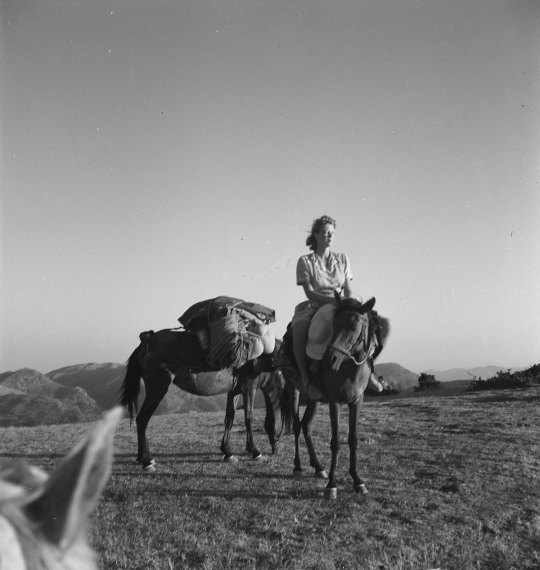
Fiercely independent - a trait that must have enamoured Paddy - they were best imagined as two pillars of a Greek temple, beside one-another but capable of holding up the roof of the world that they had built for themselves through the lens of ancient history and Hellenic culture. Indeed, it was said that they had a special ‘pact of liberty’. It is this unconquerable aura that led poet laureate John Betjeman to declare his love for her (he called her ‘Dotty’ and remarked that her eyes were as large as tennis balls). For Cyril Connolly, the photographer she shadowed, and with whom she had a scandalised affair during her first marriage, she was a “lovely boy-girl” and Laurence Durrell named her the ‘Corn Goddess’ because of her slender figure and short hair. But of all of these worthy candidates, it was the warrior-poet Patrick Leigh Fermor who finally won her heart.
To Joan, who described herself as a ‘lifelong loner’ in her diaries, her companionship with the uncomplicated Paddy was a relief. They had no children, nor did they want any - or so Paddy claimed. But those who knew Joan suspected she did want children but it never came to pass; and so she became a devoted aunt or dotted on other friends’ children. For both of them their dozens of cats gave them the next best thing to paternal satisfaction. Still, her morbid fascination with photographing cemeteries painted a much darker side.
Joan Raynor’s inheritance subsidised his peripatetic life at least until the enormous success of ‘A Time of Gifts’ in the late 1970s, which in turn created a new market for his previous volumes about Greece, ‘Mani’ and ‘Roumeli’.

With Joan’s tacit consent, Paddy enjoyed amorous flings, discrete sexual affairs with high society women and sampled the low delights of the brothel. This activity rarely made it into his private letters, but the exceptions could be piquant. Writing in 1958 from Cameroon, where he was on the set of a John Huston movie, he told a (male) friend: “ Errol Flynn and I . . . sally forth into dark lanes of the town together on guilty excursions that remind me rather of old Greek days with you.” In a 1961 letter to the film director John Huston’s wife, Ricki, with whom Leigh Fermor had been having sex with (and would die in a car crash in 1969). “I say,” the passage begins, “what gloomy tidings about the CRABS! Could it be me?” Riffing on pubic lice and their crafty ways, he conjectures that, during a recent romp with an “old pal” in Paris, a force “must have landed” on him “and then lain up, seeing me merely as a stepping stone or a springboard to better things” - to Mrs. Huston, that is. As comic apologies for venereal infection go, the passage is surely a classic.
Like most high flying lives, it was far from blameless. Wounded women were littered in his wake. Some British visitors to Athens were less than impressed by this Englishman who posed as “more Greek than the Greeks��.
Some Greeks shared their disdain. Revisionist historians criticised his role in wartime Crete, and warned their fellow Hellenes that for all his fluency and charm, Leigh Fermor was no latter day Byron. His unoccupied car was blown up outside his Mani house, probably by members of the Greek Communist Party which he had vocally opposed. The accidental fatal shooting of a partisan in Crete led to a long blood feud which made it difficult for Leigh Fermor to re-enter the island until the 1970s, and possibly explains why he chose to settle in the Peloponnese rather than among the hills and harbours of his dreams.
His own books had already eclipsed those incidents, not only among readers of English but also in Greece, where in 2007 the government of his adopted land made him a Commander of the Order of the Phoenix for services to literature.
Travel writers such as the great Jan Morris have described Leigh Fermor as the master of their trade and its greatest exponent in the 20th century.

When ‘A Time of Gifts’ was published in 1977, Frederick Raphael wrote: “One feels he could not cross Oxford Street in less than two volumes; but then what volumes they would be!”
They are not for everyone. Leigh Fermor wrote that written English is a language whose Latinates need pegging down with simple Anglo-Saxonisms, and some feel that he personally could have made more and better use of the mallet. His exuberance is either captivating or florid. It is certainly unique among English prose styles.
Artemis Cooper, his patient and careful biographer wrote that “Paddy had found a way of writing that could deploy a lifetime’s reading and experience, while never losing sight of his ebullient, well-meaning and occasionally clumsy 18-year-old self … this was a wonderful way of disarming his readers, who would then be willing to follow him into the wildest fantasies and digressions”.
Those fantasies and digressions took decades to express. ‘A Time of Gifts’ had arguably been 40 years in the making when it was published in 1977. Its sequel, ‘Between the Woods and the Water’, did not appear until 1986. The third and final volume has been awaited ever since. Following Leigh Fermor’s death, a foot-high manuscript was apparently found on his desk.
Once he knuckled down to it, Leigh Fermor loved playing around with words. He was one of our greatest stylists and he was devoted to producing un-improvable books. But writing did not come easily to him, at least partly because it was something of a distraction from the main event, which was living an un-improvable life of unrepentant gaiety and fun.
For forty odd years, a legion of friends and admirers would beat a path to Paddy and Joan’s door. Artists, poets, royalty and writers came, all taking inspiration from their erudite hosts. A visit was an act of communion, a sharing of ideas and stories.
Leigh Fermor influenced a generation of British travel writers, including Bruce Chatwin, Colin Thubron, Philip Marsden, Nicholas Crane, Rory Stewart, and William Dalrymple. Indeed when Bruce Chatwin died, it was Paddy who scattered Chatwin’s ashes near a church in the mountains in Kardamyli.
When I was there in April 2022, I went to that same church to pay my respects.
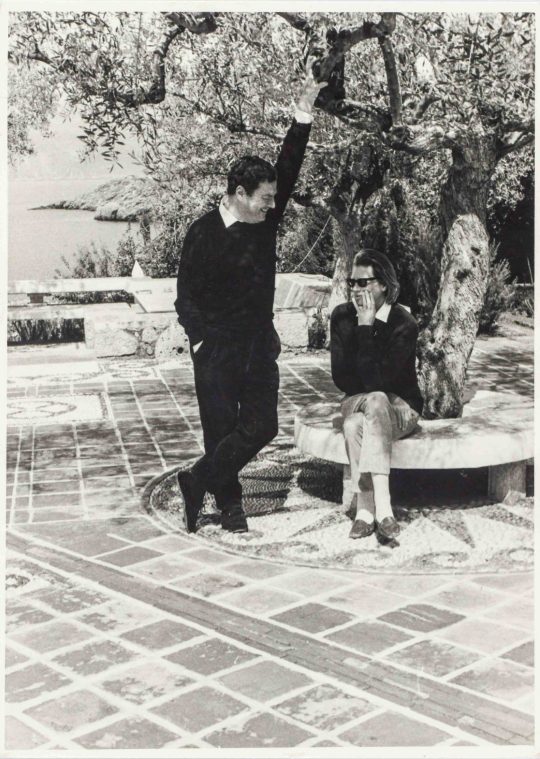
But some of Paddy’s life energy was sucked out of him when Joan died in Kardamyli in June 2003, aged 91. It was related that Joan said to her friend Olivia Stewart, who was visiting: 'I really would like to die but who'd look after Paddy?' Olivia said that she would. A few minutes later, Joan fell, hit her head - and died instantly of a brain haemorrhage. Joan had often quoted Rilke: 'The good marriage is one in which each appoints the other as guardian of his solitude.' Now Paddy Leigh Fermor was all alone.
Leigh Fermor was knighted in 2004, the day of his birthday which he delighted in like a giggling schoolboy. But he missed Joan terribly.
For the last few months of his life Leigh Fermor suffered from a cancerous tumour, and in early June 2011 he underwent a tracheotomy in Greece. As death was close, according to local Greek friends, he expressed a wish to visit England to bid goodbye to his friends, and then return to die in Kardamyli, though it is also stated that he actually wished to die in England and be buried next to his wife, Joan, in Dumbleton, Gloucestershire. He stayed on at Kardamyli until the 9th June 2011, when he left Greece for the last time. He died in England the following day, 10th June 2011, aged 96. It was reported that he had dined in full black tie on the evening of his death. Paddy had style even unto the end.
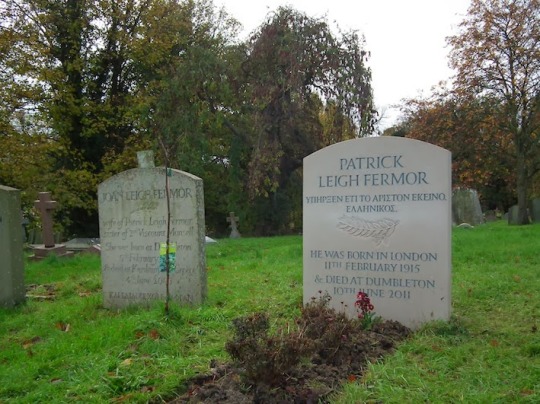
A Guard of Honour was formed by the Intelligence Corps and a bugler from his former regiment, the Irish Guards, delivered the ‘Last Post’ at Paddy’s funeral. As had been his wish, he was buried beside Joan. On his gravestone in Dumbleton cemetery is an inscription in Greek, a quote from Constantine Cavafy: “In addition, he was that best of all things, Hellenic.”
Although Joan had passed away at the age of ninety-one, after suffering a fall in the Mani. Her body was repatriated to Dumbleton, the place of her birth - ironic that her dream was to be as far as she could possibly go from the rolling humdrum Worcestershire hills. But perhaps she intended to return all along. When Paddy was buried beside her it seemed that the ‘pact of liberty’ that these two lonely souls had forged themselves could be tested in the great elsewhere. Joan was more than his muse (as many of her obituaries were at pains to declare) but his greatest adventure.
To come around full circle from the movie ‘Ill Met By Moonlight’ (1957) that I saw that night in Verbier, my father told me that rather poignantly, General Kreipe, the German commander Leigh Fermor had captured - once an enemy, and later a friend - left behind notes and photographs from across his life. On one of those notes, it was discovered, the following was scribbled from a brief visit to Greece: “Somewhere, amidst all the disarray, was the story of Joan and Paddy, and” it concluded, “…of their lives together.”
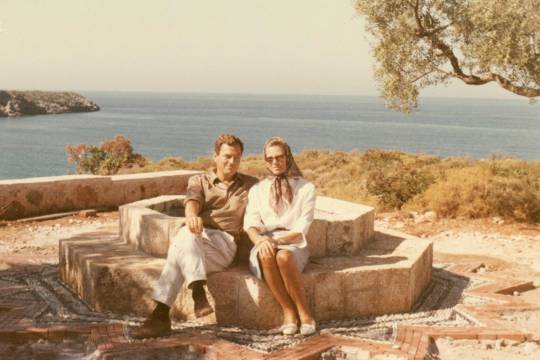
His life with Joan and all that she meant to him was one part of the mosaic of who Paddy Leigh Fermor was. But it’s incomplete.
Paddy didn’t like the idea of a biography, and neither did Joan when she was alive. But friends had persuaded them that unless Paddy appointed someone to write his life, he might find himself the subject of a book whether he liked it or not. In Artemis Cooper they couldn’t have chosen a better writer to chronicle Paddy’s life as a man of action and letters. Cooper, was the daughter of another accomplished diplomat and historian, John Julius Norwich, and grand-daughter of Duff and Diana Cooper. As the wife of the historian Antony Beevor, she became a trusted friend of the Leigh Fermors. Cooper was too good of a historian to let her friendship lead her astray from being a faithful but serious biographer. Knowing this, she was told she could go ahead, but she had to promise not to publish anything until after they were both dead.
Paddy did not like being interviewed, and would keep her questions at bay with a torrent of dazzling conversation. He was the master at deflecting discussions away from himself.
He was also very unwilling to let Cooper see many of his papers, though the refusal always couched in excuses. ‘Oh dear, the Diary…’ It was the only surviving one from his great walk across Europe, and I was aching to read it. ‘Well it’s in constant use, you see, as I plug away at Vol III,’ he would say. Or, ‘My mother’s letters? Ah yes, why not. But it’s too awful, I simply cannot remember where they’ve got to…’ It was quite obvious that he and Joan, while being unfailingly generous, welcoming and hospitable, were determined to reveal as little as possible of their private lives.
While they were more than happy to talk about books, travels, friends, Crete, Greece, the war, anything - they would not tell her any more than they would have told the average journalist. But she persisted and got closer than most. He showed particularly gallantry in not talking about his romantic entanglements. But she soon twigged that anytime he described a woman as ‘an old pal’ it was a sure bet that he had an affair with her.
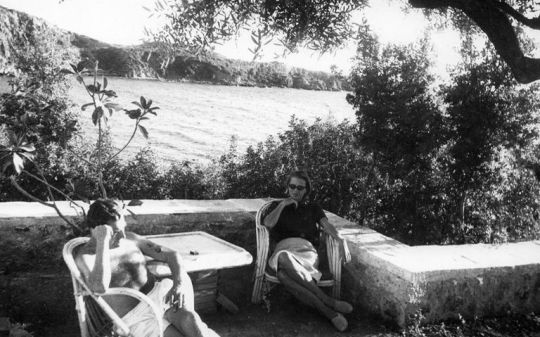
Intriguingly, Paddy liked to claim he was descended from Counts of the Holy Roman Empire, who came to Austria from Sligo. Paddy could recite ‘The Dead at Clomacnoise’ (in translation) and perhaps did so during a handful of flying visits to Ireland in the 1950s and 1960s, partying hard at Luggala House or Lismore Castle, or making friends with Patrick Kavanagh and Sean O’Faolain in Dublin pubs. He once provoked a massive brawl at the Kildare Hunt Ball, and was rescued from a true pounding by Ricki Huston, a beautiful Italian-American dancer, John Huston’s fourth wife and Paddy’s lover not long afterwards.
And yet, a note of caution about Paddy’s Irish roots is sounded by his biographer, Artemis Cooper, who also co-edited ‘The Broken Road’, the final, posthumously published instalment of the trilogy. “I’m not a great believer in his Irish roots,” she said of Leigh Fermor in an interview, “His mother, who was a compulsive fantasist, liked to think that her family was related to the Viscount Taaffes, of Ballymote. Her father was apparently born in County Cork. But she was never what you might call a reliable witness. She was an extraordinary person, though. Imaginative, impulsive, impossible - just the way the Irish are supposed to be, come to think of it. She was also one of those sad women, who grew up at the turn of the last century, who never found an outlet for their talents and energies, nor the right man, come to that. All she had was Paddy, and she didn’t get much of him.”
And I think that’s the point, no one really got much of Paddy Leigh Fermor even as he only gave a crumb of himself to others but still most felt grateful that it was enough to fill one’s belly and still feel overfed by him.
Paddy never tried to get to the bottom of his Irish ancestry, afraid, no doubt, of disturbing the bloom that had grown on history and his past, a recurring trait. “His memory was extraordinary,” Artemis Cooper noted, “but it lay dangerously close to his imagination and it was a very porous border.”
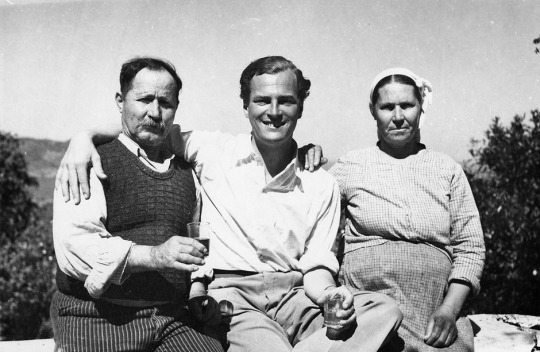
Within the Greek imagination many Greeks saw in Paddy Leigh Fermor as the second coming of Lord Byron. It’s not a bad comparison.
Lord Byron claimed that swimming the Hellespont was his greatest achievement. 174 years or so later, another English writer, Patrick Leigh Fermor - also, like Byron, revered by many Greeks for his part in a war of liberation - repeated the feat. Leigh Fermor, however, was 69 when he did it and continued to do it into his 80s. Byron was a mere 22 years old lad. The Hellespont swim, with its mix of literature, adventure, travel, bravery, eccentricity and romance, is an apt metaphor for Leigh Fermor’s life. Paddy Leigh Fermor was the Byron of his time. Both men had an idealised vision of Greece, were scholars and men of action, could endure harsh conditions, fought for Greek freedom, were recklessly courageous, liked to dress up and displayed a panache that impressed their Greek comrades. Like a good magician it was also a way to misdirect and conceal one’s true self.
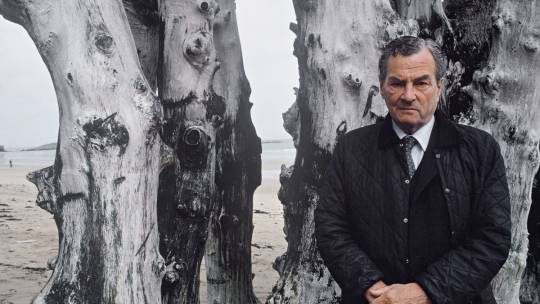
What or who was the true Paddy Leigh Fermor?
Like Byron, Leigh Fermor appeared as a charismatic and assured figure. He was a sightseer, consuming travel, culture, and history for pleasure. He was an aristocrat moving in the social circles of his time. He was a gifted amateur scholar, speculating on literary and historical sources. Leigh Fermor, Byron’s own identity, is subject to textual distortion; it emerges from a piece of occasional prose in his books and is shaped by the claims of correspondence on a peculiarly fluid consciousness.
There is no hard and fast distinction to be drawn here between real and imagined, only a continuity of relative fictions that lie between memory and imagination as his biographer asserted. If there is a will to assert identity here, to disentangle fact and fiction, to give things as they really are and nail down the real Leigh Fermor then it is somewhere between the two. This is where we will find Paddy.
For many his death marked the passing of an extraordinary man: soldier, writer, adventurer, a charmer, a gallant romantic. As a writer he discovered a knack for drawing people out and for stringing history, language, and observation into narrative, and his timing was perfect. Paddy often indulged in florid displays of classical erudition. His learned digressions and serpentine style, his mannered mandarin gestures, even baroque prose, which Lawrence Durrell called truffled and dense with plumage, were influenced by the work of Charles Doughty and T.E. Lawrence. But one can’t compare him. I agree with the acclaimed writer Colin Thurbon who said, “There is, in the end, nobody like him. A famous raconteur and polymath. Generous, life-loving and good-hearted to a fault. Enormously good company, but touched by well-camouflaged insecurities. I would rank him very highly. ‘The finest travel writer of his generation’ is a fair assessment.”
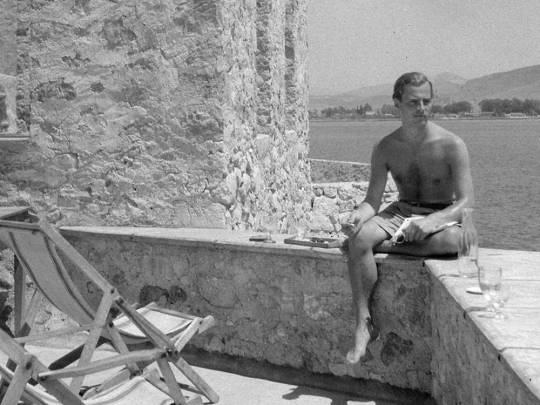
As a child I didn’t really know who Paddy Leigh Fermor was other than this very cheerful and charismatic old man was kind, attentive, and took a boyish delight in everything you were doing. Only later on in adulthood was it clear to that Paddy was not only among the outstanding writers of his time but one of its most remarkable characters, a perfect hybrid of the man of action and the man of letters. Equally comfortable with princes and peasants, in caves or châteaux, he had amassed an enviable rich experience of places and people. “Quite the most enchanting maniac I’ve ever met,” pronounced Lawrence Durrell, and nearly everyone who’d crossed paths with him had, it seemed, come away similarly dazzled.
I am equally dazzled - more smitten in retrospect - for alas they don’t make men like Paddy any more. But every time I dip back into his books I think I discover a little bit more of who Paddy Leigh Fermor was because I find him some where between my memory and my imagination.
#essay#paddy leigh fermor#leigh fermor#joan raynor#joan leigh fermor#greece#crete#second world war#SOE#war#british army#history#general kreipe#stanley moss#literature#author#writer#travel#explorer#wanderlust#travel writing#europe#mani#peloponnese#kardamlyi#lord byron#ill met by moonmight#film#movie#personal
126 notes
·
View notes
Text



Chris Harms on the catwalk for designer Tom Rebl.
‘Rock Fashion Night 2010’ at Universal Hall in Berlin. January 22nd, 2010
📷: IMAGO & Chriz Lohn for aedt.de
📹: Heiko Seifert, Patrick Müller / Panikers, LocationTV
#chris harms#lord of the lost#This was such an interesting find#sadly most of the media press stuff from the time is defunct or not well archived#I would love to know how he got roped into this lol#I have No clue who took that first photo I got it off their social media
12 notes
·
View notes
Text

Patrick Herrmann’s retirement will leave Tony Jantschke and Thomas Müller as the two joint longest-serving players in the Bundesliga.
8 notes
·
View notes
Note
hockey questions! 3, 18 & 21 :)
3. Team you recently became a fan of and how it started.
Hm, how recent is recently? :D I spent new year in Helsinki and my friend and I planned that we would go to one game of a helsinki or helsinki-adjacent team and it worked out that we got to see Jokerit, which we were interested in seeing anyways since they „returned“ to the Finnish leagues. And we had lots of fun and just. Yeah. That convinced me to become their fan.
18. who would be on your dream hockey team?
That’s such a fun question but also stressful.
Goalies: Lassi Lehtinen/Christian Heljanko (sorry Strahlie)
Dmen: Cale Makar, Quinn Hughes, Eemil Viro, Moritz Müller, Moritz Seider, Brent Burns, Kris Letang, Erik Karlsson
Forwards: Oliver Kapanen, JJ Peterka, Mikko Rantanen, Ville Järveläinen, Roope Mäkitalo, Pierre-Luc Dubois, Nolan Patrick, Matthew Tkachuk, Markus Nurmi, Parker Tuomie, Wojtek Stachowiak, Justin Schütz
Does this make sense with their exact positions? Are they on the same level of playing? Not at all. But I like them. No one said I had to be realistic
21. do you believe in any hockey curses?
Hm. I don’t believe in jinxing, that sounds like I could actively jinx something for a team, that’s not how it is. But I do believe that proclaiming a teams success way to early is jinxing their chances at actually winning.
2 notes
·
View notes
Text
Davos 1917
Davos 1917 (Serie 2023) #DominiqueDevenport #DavidKross #JeanetteHain #SunnyiMelles #AnnaSchinz #SvenSchelker Mehr auf:
Serie Jahr: 2023- Genre: Drama / Thriller / Kriegsserie Hauptrollen: Dominique Devenport, David Kross, Jeanette Hain, Sunnyi Melles, Anna Schinz, Sven Schelker, Stipe Erceg, Welket Bungué, Cornelius Obonya, Ruben Brinkman, Max Herbrechter, Hanspeter Müller, Joel Schnabel, Patrick Christopher Ehler, Anna Holmes … Serienbeschreibung: Im Jahr 1917, während des Ersten Weltkriegs, tobt in Europa…

View On WordPress
2 notes
·
View notes
Text
Am 30. Juni 2017 stimmte der Deutsche Bundestag über den Gesetzesentwurf zur "Ehe für alle" ab. Von 623 Abgeordneten (7 der eigentlich 630 Bundestagsmitglieder nahmen an der Abstimmung nicht teil) stimmten 393 für und 226 gegen die Verabschiedung des Gesetzes, welches gleichgeschlechtlichen Paaren die Eheschließung ermöglichen sollte. 4 Abgeordnete (allesamt der CDU/CSU-Fraktion angehörig) enthielten sich.
Bis auf die Stimme der fraktionslosen Abgeordneten Erika Steinbach (ursprünglich CDU, seit 2022 Mitglied der AfD) kamen alle Nein-Stimmen aus den Rängen der CDU/CSU-Fraktion, was bei 225 von 309 Abgeordneten bedeutet, dass knapp 73% der Fraktionsmitglieder gegen die "Ehe für alle" stimmten. (Ja-Stimmen gab es von ca. 24%, die Abwesenden und Enthaltungen machten zusammen ca. 3% der CDU/CSU-Stimmen aus.)
Von den 226 Abgeordneten, die damals gegen den Gesetzesentwurf zur "Ehe für alle" stimmten, amtieren zur Zeit 87 als Mitglieder des Bundestags.
Alle von ihnen sind Mitglieder der CDU/CSU-Fraktion. Im Einzelnen handelt es sich bei diesen Abgeordneten um:
Artur Auernhammer (Bayern)
Dorothee Bär (Bayern)
Thomas Bareiß (Baden-Württemberg)
Dr. André Berghegger (Niedersachsen)
Steffen Bilger (Baden-Württemberg)
Michael Brand (Hessen)
Dr. Reinhard Brandl (Bayern)
Prof. Dr. Helge Braun (Hessen)
Heike Brehmer (Sachsen-Anhalt)
Ralph Brinkhaus (Nordrhein-Westfalen)
Alexander Dobrindt (Bayern)
Michael Donth (Baden-Württemberg)
Hansjörg Durz (Bayern)
Hermann Färber (Baden-Württemberg)
Uwe Feiler (Brandenburg)
Enak Ferlemann (Niedersachsen)
Thorsten Frei (Baden-Württemberg)
Dr. Hans-Peter Friedrich (Bayern)
Michael Frieser (Bayern)
Ingo Gädechens (Schleswig-Holstein)
Hermann Gröhe (Nordrhein-Westfalen)
Michael Grosse-Brömer (Niedersachsen)
Markus Grübel (Baden-Württemberg)
Manfred Grund (Thüringen)
Oliver Grundmann (Niedersachsen)
Olav Gutting (Baden-Württemberg)
Christian Haase (Nordrhein-Westfalen)
Florian Hahn (Bayern)
Jürgen Hardt (Nordrhein-Westfalen)
Dr. Stefan Heck (Hessen)
Ansgar Heveling (Nordrhein-Westfalen)
Christian Hirte (Thüringen)
Alexander Hoffmann (Bayern)
Hubert Hüppe (Nordrhein-Westfalen)
Erich Irlstorfer (Bayern)
Thomas Jarzombek (Nordrhein-Westfalen)
Anja Karliczek (Nordrhein-Westfalen)
Ronja Kemmer (Baden-Württemberg)
Dr. Georg Kippels (Nordrhein-Westfalen)
Volkmar Klein (Nordrhein-Westfalen)
Axel Knoerig (Niedersachsen)
Jens Koeppen (Brandenburg)
Markus Koob (Hessen)
Gunther Krichbaum (Baden-Württemberg)
Dr. Günter Krings (Nordrhein-Westfalen)
Ulrich Lange (Bayern)
Paul Lehrieder (Bayern)
Dr. Andreas Lenz (Bayern)
Andrea Lindholz (Bayern)
Dr. Carsten Linnemann (Nordrhein-Westfalen)
Patricia Lips (Hessen)
Daniela Ludwig (Bayern)
Yvonne Magwas (Sachsen)
Stephan Mayer (Bayern)
Dr. Michael Meister (Hessen)
Dietrich Monstadt (Mecklenburg-Vorpommern)
Stefan Müller (Bayern)
Wilfried Oellers (Nordrhein-Westfalen)
Florian Oßner (Bayern)
Henning Otte (Niedersachsen)
Thomas Rachel (Nordrhein-Westfalen)
Kerstin Radomski (Nordrhein-Westfalen)
Alexander Radwan (Bayern)
Alois Rainer (Bayern)
Dr. Peter Ramsauer (Bayern)
Josef Rief (Baden-Württemberg)
Dr. Norbert Röttgen (Nordrhein-Westfalen)
Erwin Rüddel (Rheinland-Pfalz)
Albert Rupprecht (Bayern)
Dr. Wolfgang Schäuble (Baden-Württemberg)
Andreas Scheuer (Bayern)
Jana Schimke (Brandenburg)
Patrick Schnieder (Rheinland-Pfalz)
Detlef Seif (Nordrhein-Westfalen)
Thomas Silberhorn (Bayern)
Albert Stegemann (Niedersachsen)
Christian Freiherr von Stetten (Baden-Württemberg)
Stephan Stracke (Bayern)
Max Straubinger (Bayern)
Astrid Timmermann-Fechter (Nordrhein-Westfalen)
Dr. Volker Ullrich (Bayern)
Marco Wanderwitz (Sachsen)
Nina Warken (Baden-Württemberg)
Dr. Anja Weisgerber (Bayern)
Annette Widmann-Mauz (Baden-Württemberg)
Klaus-Peter Willsch (Hessen)
Emmi Zeulner (Bayern)
27 notes
·
View notes
Audio
(Radiator Of Sound 🔊)
Dark Room - EP by Patrick Müller
2 notes
·
View notes
Text
Ghost History: Hammer of Doom IV (debut ritual)

Five days after Opus Eponymous was released by Rise Above Records, Ghost performed their first ritual on October 23rd, 2010 at Hammer of Doom IV[1]. It was not the most auspicious of beginnings. Set to go on stage at 1:30pm [2], Papa Emeritus I and the Nameless Ghouls arrived on stage 15 minutes late and 10 minutes later suffered the loss of one of their guitar amps[3].
Some, hearing Ghost live for the first time, had their doubts.
“In short: even though the band got back on track towards the end with their hit “ritual”, they could live up to their previous praise. [Papa Emeritus’s] charisma on the microphone was simply not tangible enough for that; The band has to make a lot of progress here, because especially when they appear so distant due to their self-imposed image, the lack of communication simply has to be replaced by the aura of the musicians.” -Patrick Müller via Google Translate[3]
“[On the whole] the material couldn't really convince me, the dusty Seventies Rock sounds too toothless and arbitrary. The reactions in the hall were very ambivalent, so some celebrated GHOST with their theatrical appearance with inverted crosses, [mitre] and a lot of incense as the hottest shit since the invention of the electric guitar, others on the other hand withdrew with a smile towards the beer counter, because the performance there provided better entertainment.” -dekleenenils via Google Translate[4]
But the devil worshiping ministry’s mission to spread their unholy gospels[5] is targeted towards “individuals who have a void in their life perhaps caused by some form of emotional trauma or upset [...] so that in time the easily manipulated will come to share the views and goals of the Coven’s ministry and can prepare their own plans for the downfall of humanity.”[6]
Not all in that first crowd were unreceptive to Ghost’s ministry.
“Musically, I can only say that I really enjoy the mix of seventies rock, progressive parts and a large amount of NWoBHM*! This organ! Hammer! The biggest surprise of this kind. The satanic lyrics that the band [...] want to bring to humanity are the most lovely melodies and the clear, beautiful vocals! Now the term “Powerpop,” which they advertise on their MySpace page, finally has a meaning. Very contradictory, but absolutely convincing as a whole package! [...] I also had no luck with the [buying of] the T-shirt. I first wanted to wait and see whether the band could convince me musically and when I went to the merchandise stand after the gig, it was completely sold out.” -Chris via Google Translate[2]
And it only takes a spark to light the fires of hell. The ministry of Ghost had only just begun.
“Our mission is not as much about conversion as it is about underlining which path you have chosen to go, and where it will ultimately lead you,” declared Ghost in a rare communiqué. “We are the file playing back in your digital earpiece while you are carelessly approaching the end.”[6]
*Common abbreviation of New Wave of British Heavy Metal
[1]Ghost Concert Setlists (page 90) | setlist.fm
[2]Festivalbericht HAMMER OF DOOM IV (amboss-mag.de)
[3]Obliveon :: Metal und Gothic Webzine (archive.org)
[4]Hammer Of Doom IV - 23.10.2010 - Würzburg, Posthalle @ Bloodchamber.de
[5]Ghost – “Ritual” - Stereogum (archive.org)
[6]Ghost's 'Opus Eponymous' To Receive U.S. Release In January - Blabbermouth.net (archive.org)
Read More:
Decided to start cross-posting the work I was doing for my fansite because I am vain and like attention to help preserve it against the careless history (or lack thereof) of the internet.
#the band ghost#pro-memoria#the band ghost ritual history#both things are actually true#I am vain and I want to save information
2 notes
·
View notes
Photo










The Garden (2019, Patrick Müller)
2/27/23
#The Garden#lovecraftian shorts#Patrick Muller#lovecraftian#H.P. Lovecraft#short#horror#poem#poetry#literary#garden#gothic#Georgia#Southeast#flowers#trees#plants
12 notes
·
View notes
Photo

Demain ! Morgen ! 07/10/2022 PREMIÈRE ! DIE ZAUBERFLÖTE @ Kulturbühne AMBACH Portaits © mtvo.at / Julien Munschy Merci à Maria Kwaschik de m'avoir permis de réaliser les vidéos projetées sur scène. Merci à toute l'équipe pour toute votre aide 🤍 Eine Opern-Produktion des Musiktheater Vorarlberg, mtvo (mvto.at), 2022 Präsidentin : Margit Anita Hinterholzer Intendant und Dirigent : Nikolaus Netzer Regie : Maria Kwaschik Bühne : Isabelle Kaiser Video : Julien Munschy Kostüm : Franziska Müller Maske : Petra Knafl Tamino : Byoung-Nam Stefano Hwang Pamina : Vroni Vetter Königin der Nacht : Teresa Boning Papageno : Daniel Raschinsky Papagena : Jana Stadlmayr Sarastro : Martin Ohu / Johannes Schwendinger Monostatos : Lukas Diblik 1. Dame : Martina Kadoff 2. Dame : Mirjam Fässler 3. Dame : Mathilde Matzeit Sprecher : Johannes Schwendinger / Martin Ohu 1. Geharnischter Mann/Priester : Clemens Breuss 2. Geharnischter Mann/Priester : Christoph Hartmann 3 Knaben : Hanna Häfele, Mónika Krakó, Paula Nowak, Teresa Faißt, Eva Mayer, Eva Melkonyan „Papa Pamina“ : Gerald Futscher „Junge Pamina“ : Nora Alverez Sanchez Musikalische Assistenz : Michael Köck Chorleitung : Darina Naneva Korrepetition Nora Calvo-Smith, Dorsa Saberi Technik : Martin Beck, Benedikt Marte, Michael Summer Bühnenbau : Roland Adlassnigg Lichtinspizienz : Martina Ender Regieassistenz : Angela Dockal Produktionsassistenz : Patrick Walse #videoartist #opera #mozart #zauberflöte #portrait #videoportrait #portraitphotography #videoart https://www.instagram.com/p/CjYTiArqCOG/?igshid=NGJjMDIxMWI=
9 notes
·
View notes
Text

8 Zeichnungen / Patrick Alt & Franziska Hufnagel
Müller Bar, Berlin / 15. August - 23. September 2024
_
>>> SELECTED DRAWINGS
_
0 notes
Text

8 Zeichnungen / Patrick Alt & Franziska Hufnagel
15. August - 23. September, 2024 / Müller Bar, Berlin
0 notes